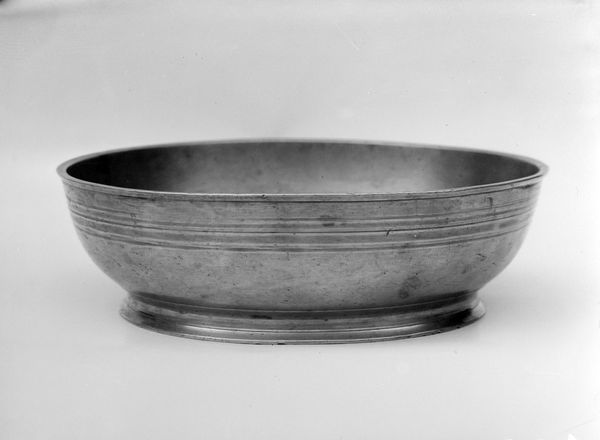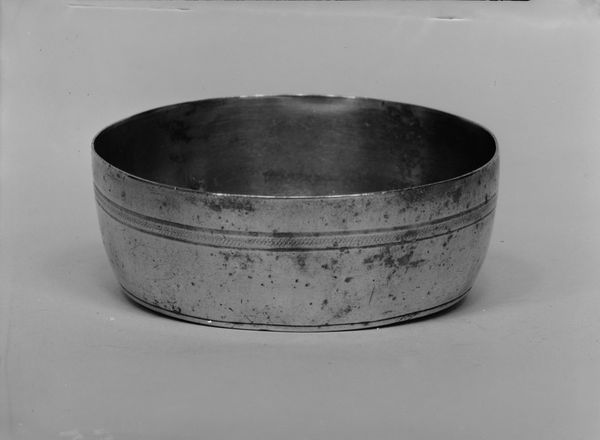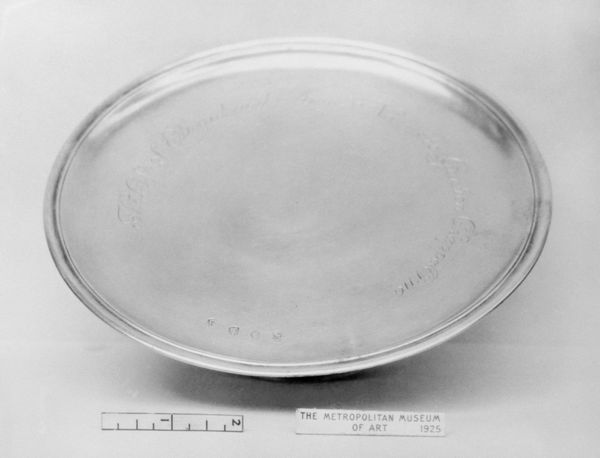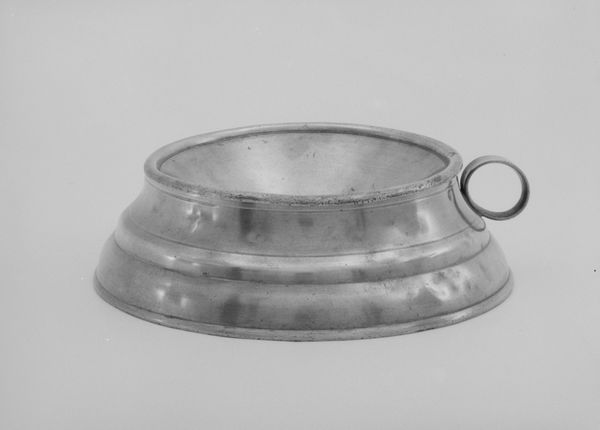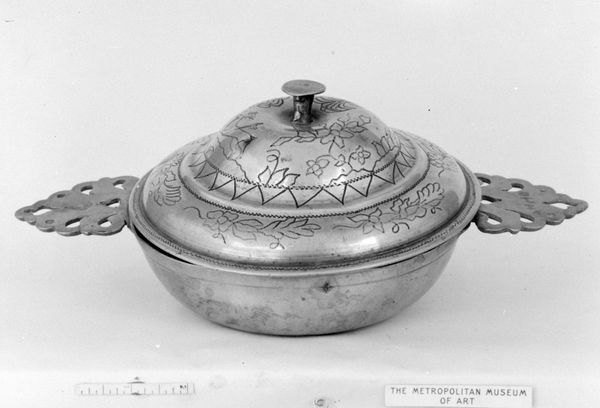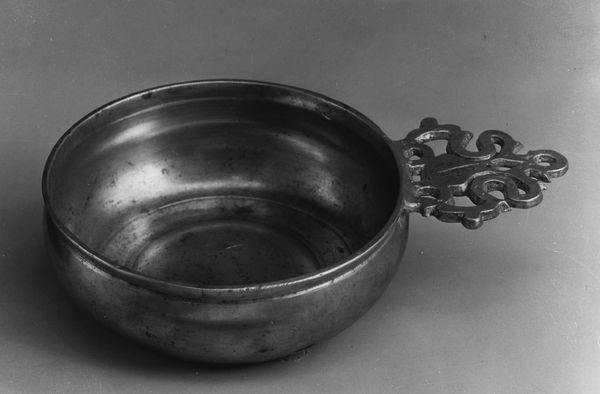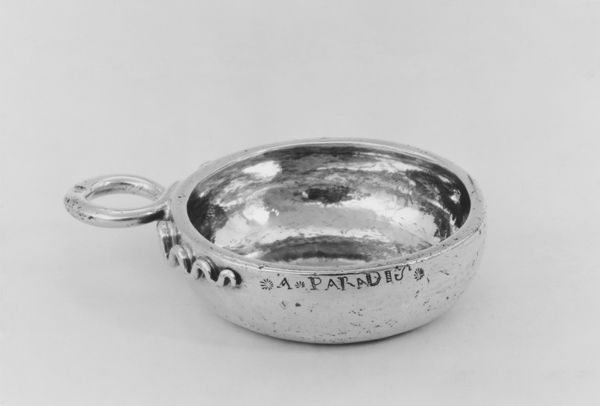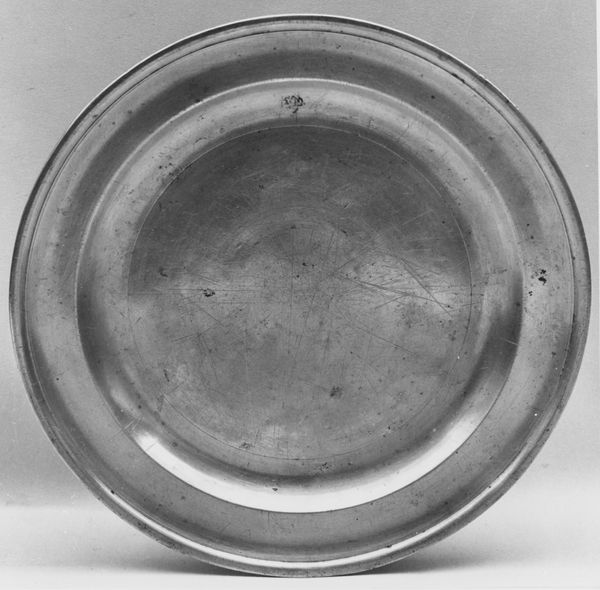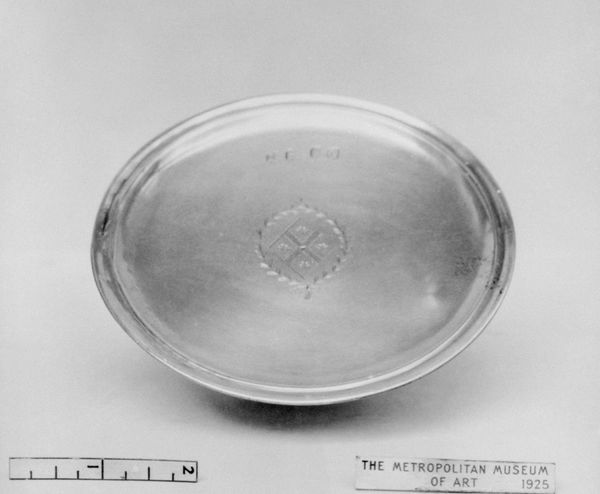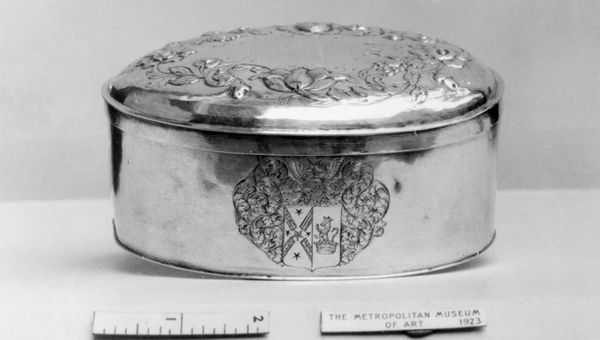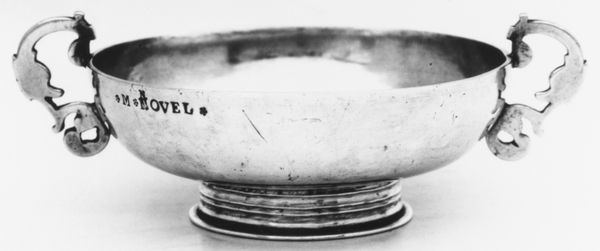
metal, sculpture
#
metal
#
sculpture
#
decorative-art
Dimensions: Overall: 2 7/8 × 9 1/4 in. (7.3 × 23.5 cm)
Copyright: Public Domain
Curator: Here we have a delightful piece of domestic history, a "Jelly Mold" crafted in 1785, currently residing at the Metropolitan Museum of Art. It's attributed to Leonhard Finck the Elder. Editor: My initial impression is of quiet elegance. The simplicity of its form and the subtle shimmer of the metal convey a sense of refined taste, despite it just being a mold. Curator: Absolutely. And while we might view it as a "simple" mold, let's consider the materials and production involved. This object, fashioned from metal, speaks volumes about the skilled labor of metalworkers and the access to resources available in the late 18th century. It blurs lines; is it high art or merely craft? The very act of shaping everyday culinary life becomes elevated. Editor: True, but its elegance also resides in the deliberate arrangement of its elements. Note the perfectly balanced handles, mirroring each other, or the uniform spacing of those small, stylized floral engravings. See how they subtly play with light and shadow across the form? There's a formal restraint here, a classical harmony that elevates it beyond the purely functional. Curator: Precisely! The question then becomes: what sort of social rituals surrounded the consumption of molded jellies in 1785? Who was producing and consuming them, and what does that tell us about wealth and status during that period? It's about unveiling the social structures encoded within this object. Editor: While I appreciate the historical context, the object itself prompts more immediate considerations. Look at the precision and balance between decoration and void in its engravings. They work together creating rhythm. This to me goes beyond functional craft to fine design, evoking beauty from austerity. Curator: Agreed, it embodies both. It reveals how culinary practices were embedded within a broader system of production, distribution, and consumption. Editor: It does provide us access to this cultural context, and yet, by emphasizing formal beauty and subtle expression of period aesthetic ideals it holds significance even outside that framework.
Comments
No comments
Be the first to comment and join the conversation on the ultimate creative platform.
